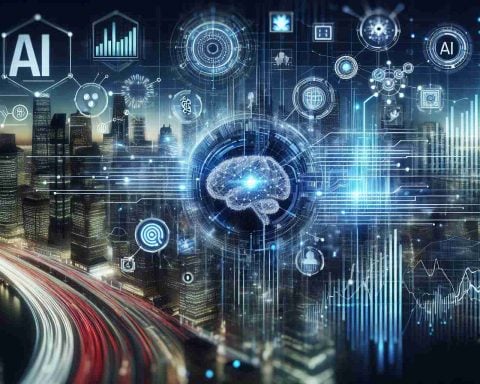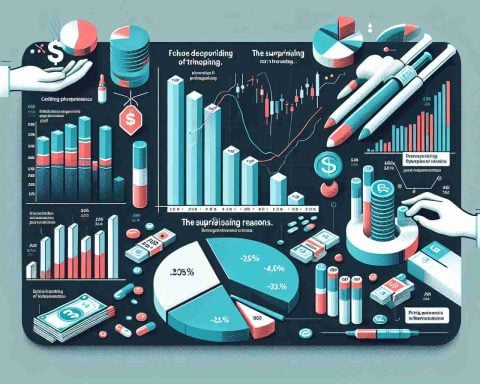Challenges Ahead for Automakers
The auto sector is gearing up for a tumultuous year, with geopolitical tensions and potential tariff increases casting shadows over its future. Recent analyses estimate that approximately 90 million new vehicles could hit the market globally by 2025. This projection presents a picture of modest growth driven by decreasing interest rates, which Fitch Ratings believes could entice consumers to make purchases.
However, the landscape is far from stable. Proposed tariffs by the incoming US administration are looming large, threatening to disrupt the intricate supply chain that supports vehicle production. Automakers from Canada, Mexico, Europe, and Asia are on high alert, preparing for possible hurdles that could impact their export capabilities.
As industry stakeholders navigate these complex challenges, the overarching question remains: how will automakers adapt to an evolving market landscape? With uncertainties surrounding trade policies and economic conditions, the decisions made in the coming months will be crucial.
The auto industry stands at a crossroads, poised between potential growth and significant risks. The coming year will require strategic foresight and resilience to tackle the impending changes that could reshape the industry’s future trajectory. Will manufacturers rise to the occasion, or will external pressures derail their plans? The answer could define the auto market for years to come.
Navigating Uncertainty: The Future of the Auto Industry
Introduction
As we enter a new year, the automotive industry is facing a myriad of challenges that could reshape its landscape significantly. With geopolitical tensions, potential tariff increases, and evolving consumer behavior, automakers must navigate a complex environment filled with both opportunities and risks.
Current Trends in Vehicle Production
Recent data suggests that the global vehicle market may see around 90 million new vehicles produced by 2025. This growth is anticipated despite an array of hurdles, including shifting consumer preferences toward electric vehicles and a growing demand for sustainable automotive solutions. Automakers are diversifying their product lines and investing heavily in new technologies, aligning with the broader trend toward electrification and autonomous driving features.
Key Challenges for Automakers
1. Geopolitical Tensions: The backdrop of escalating geopolitical issues complicates trade, making the international automotive supply chain more vulnerable. Tariffs proposed by the US administration could significantly impact costs and pricing strategies, pushing manufacturers to reconsider their sourcing and manufacturing locations.
2. Supply Chain Disruption: The intricate global supply chains that underpin vehicle production are already strained. Issues such as semiconductor shortages and logistical delays could hinder the timely delivery of new vehicles and spare parts, leading to potential revenue losses.
3. Regulatory Pressures: Stricter emission regulations and safety standards worldwide require automakers to invest in compliance and innovation. This not only diverts resources but also risks leaving some manufacturers behind if they fail to adapt quickly.
Innovations and Adaptations
Automakers are actively seeking to adapt through innovation. Many are:
– Investing in Electric Vehicle (EV) Technology: With consumer interest shifting towards sustainability, manufacturers are increasing investments in EV infrastructure and production. Major players like Tesla, Ford, and General Motors are leading the charge, promising to enhance their EV offerings significantly.
– Exploring Autonomous Driving: The race for developing autonomous vehicles is intensifying. Companies are investing in AI and machine learning technologies to improve safety features and enhance the driving experience.
– Utilizing Digital Tools: Adopting digital retail solutions has become crucial as consumer shopping habits evolve. Automakers are enhancing online sales platforms and customer engagement efforts to align with digital preferences.
Pros and Cons
Pros:
– Growing consumer interest in EVs can drive sales and foster innovation.
– Potential for expanding into new global markets as shifts in trade policy create new opportunities.
– Increased focus on sustainability can improve brand loyalty and market position.
Cons:
– Significant capital expenditures required for technology upgrades may strain smaller manufacturers.
– Uncertainties in global trade policies could disrupt market stability.
– Rapid technological changes may lead to obsolescence for companies that can’t keep up.
Conclusion and Predictions
The automotive industry stands at a pivotal moment. While the potential for growth remains, manufacturers must confront significant challenges head-on. By focusing on innovation, sustainability, and adaptability, automakers can position themselves to thrive in a competitive market landscape. The decisions made in the coming months will be critical in defining the trajectory of the auto industry for years to come.
For more insights into the evolving automotive landscape, visit Auto Industry Insights.











